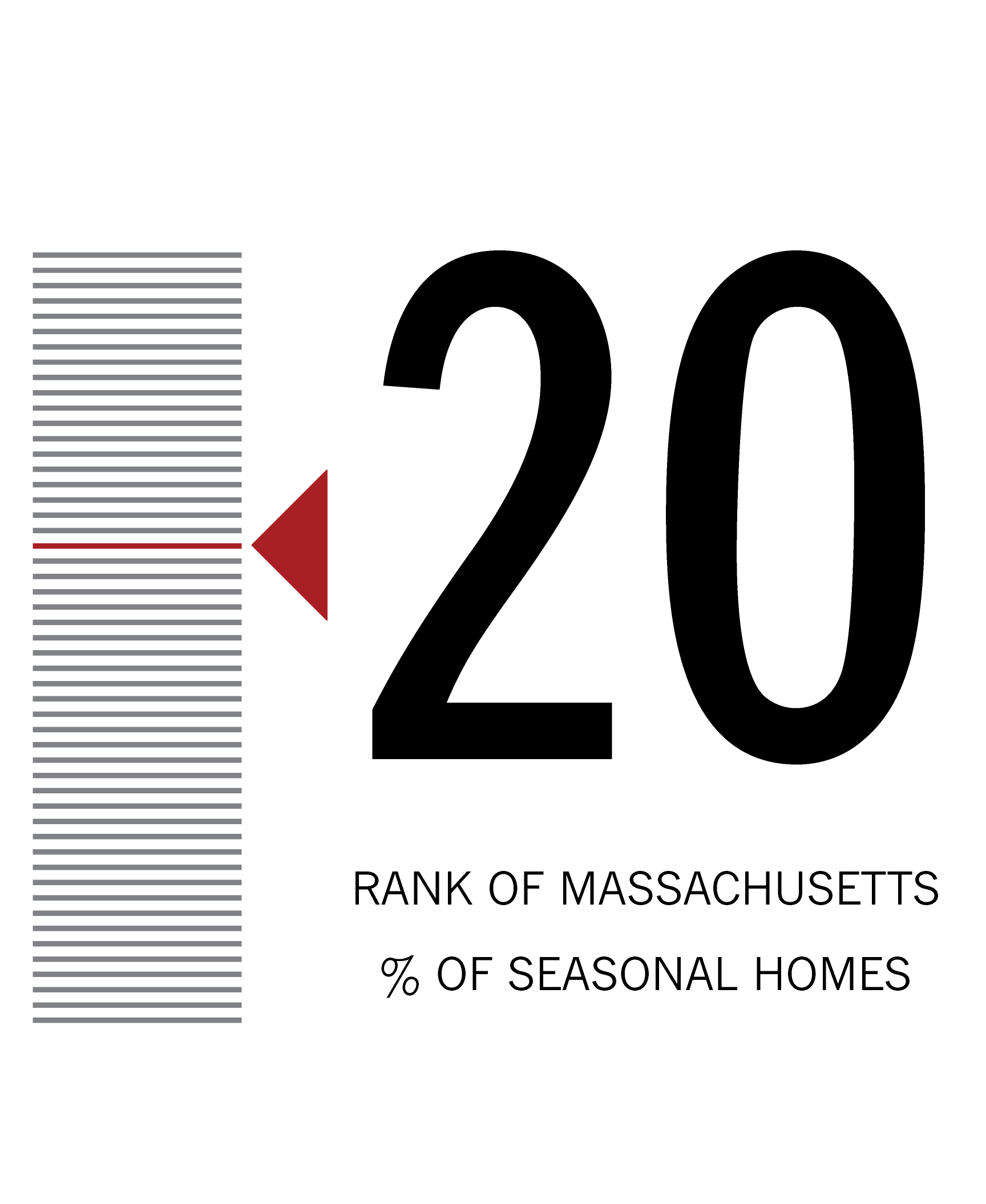
Some states have significantly more seasonal homes than others. Why?
Seasonal home purchases depend on a combination of factors: driving distance to major metropolitan areas, natural beauty and recreational opportunities, coastline and weather. During the late 1960s and ’70s about 80% of recreational land development happened in just six states: Florida, Texas, Arizona, New Mexico, Colorado and California.
The percentage of vacation homes shows great variability among the 50 states, but the top spots have been consistent over time. Maine, Vermont and New Hampshire dominate the top three rankings.
Altered States
When compared to all other states, Massachusetts ranked 10th in seasonal homes in 1940 among 48 states and Washington DC. Its drop to 20th by 2010 could indicate the evolution of the Massachusetts economy as well as changes in seasonal home stocks in other states. In terms of total housing units, Massachusetts seasonal home numbers hovered around 4% between 1940 and 2010. This tracks slightly higher than the national figure of 3.8%.
While rankings of southern New England states went down, Maine, New Hampshire and Vermont continue to lead the nation.
Use the interactive map below to see how trends have evolved across the states and over time.
- Hover over a state in the map or a block in the chart to highlight data.
- Click the 'Order by' buttons/text to show state rank by: % Seasonal Share, Number of Seasonal Housing Units, and Total Number of Housing Units.
- The selected state's value for each year will appear.
Click to Explore!
Is there a different trend when we compare counties nationally? Where do we stand? Click on the US Counties tab next.
Previous: BART Home
Next: US Counties
Data sources: US Census Bureau, Census of Housing